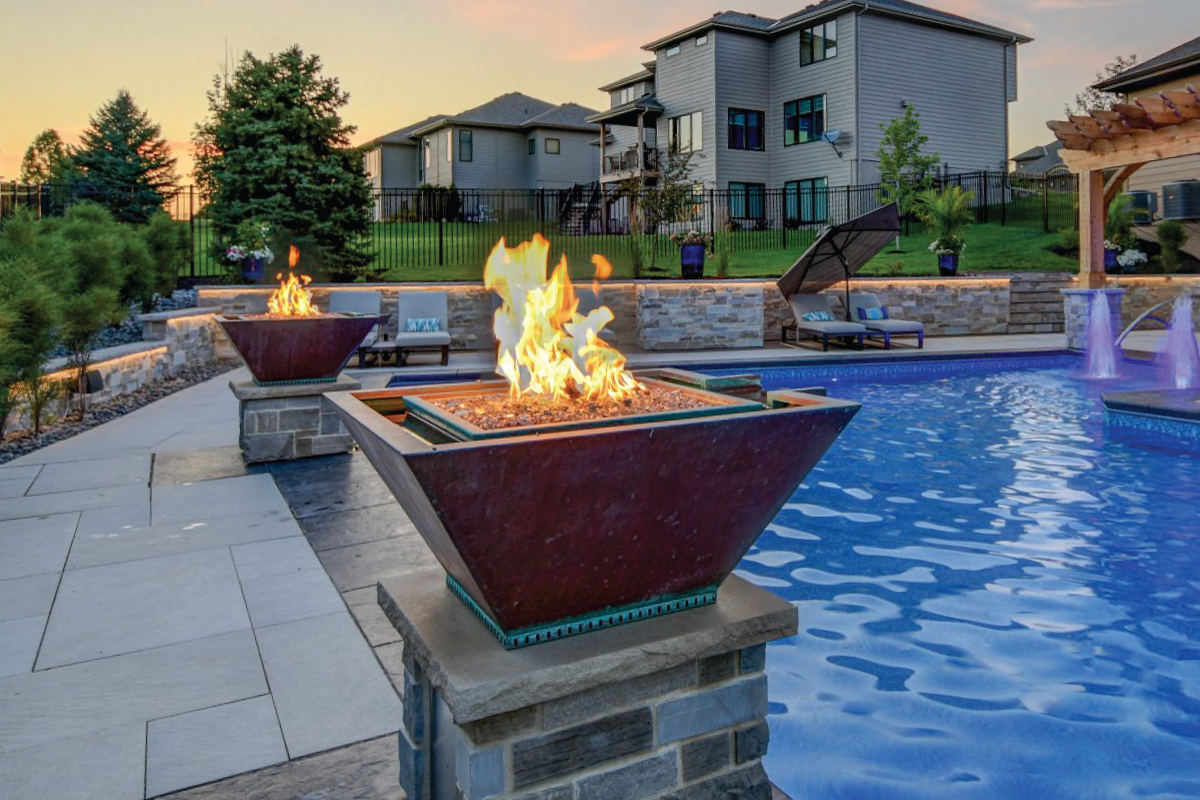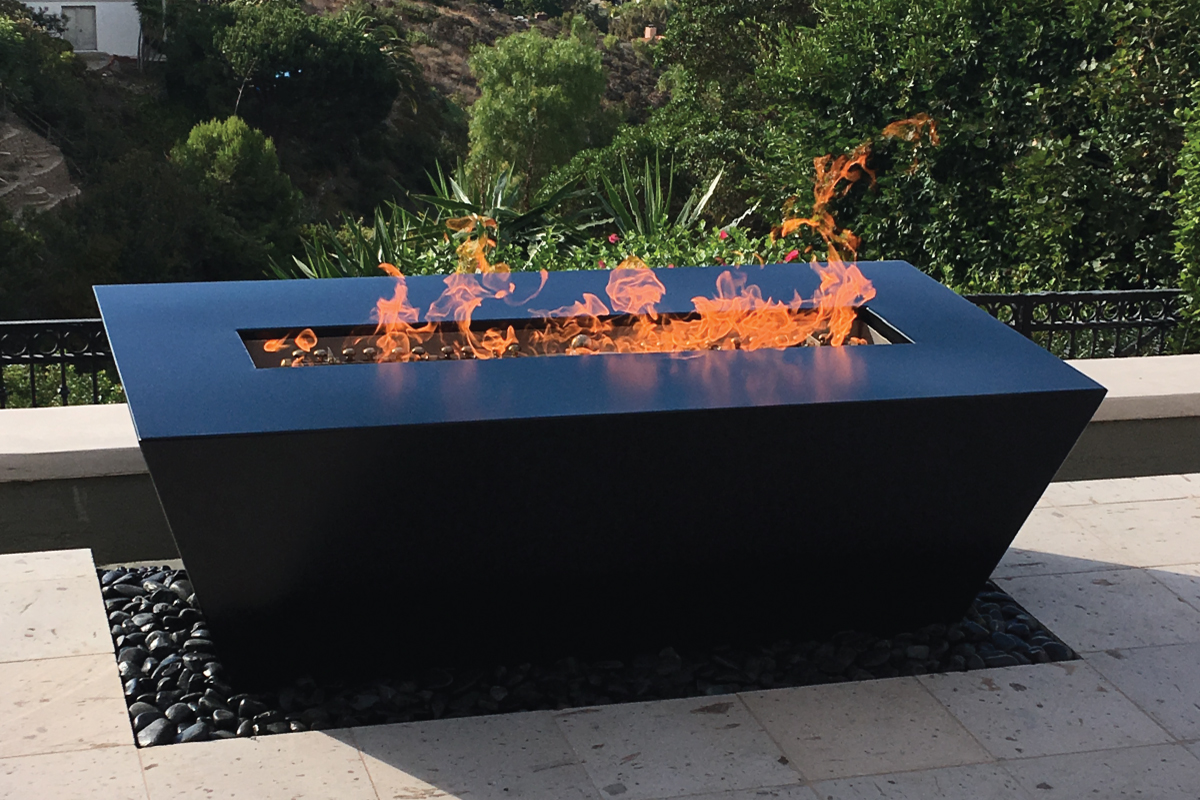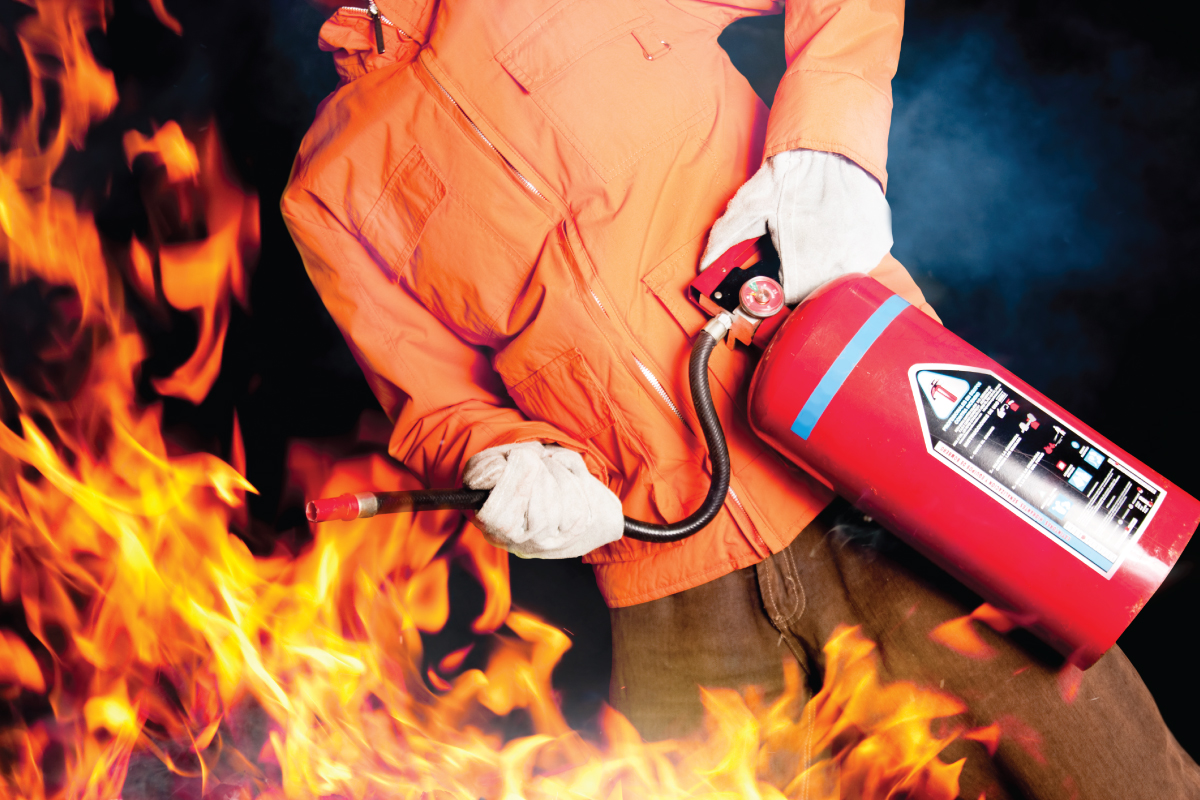Fire features are growing in popularity. In just the past five years interest has expanded year after year. If you lack experience installing gas fire features, a little preparation and explanation will help customers understand what to expect upon final installation.
LOCATION! LOCATION! LOCATION!
To start, find a safe place to install the fire feature. Make sure there is clearance for walking around. It will also need drainage so that water doesn’t collect around the base.
Either liquid propane (LP) or natural gas will be used for fuel, and all gas requires ventilation. Never fully enclose a fire feature—no more than two walls should be around the flame. And remember, LP can settle —without proper vents the gas can build up to dangerous levels.
Air-flow is also important for combustion, especially with Propane. Some units, like those from Bobé, have custom air mixers for clean burning. A bad mix can produce too much nasty soot.
If you are building a custom enclosure, make sure proper vents are constructed. Manufacturers should provide a chart showing minimum vent sizes, which may vary depending on BTUs.
PRO TIP: Don’t let the enclosure build-out or supports block the vents! It’s common to plan in proper vents only to have them unintentionally blocked by the feature structure, defeating the plan entirely.
Fire features should be installed in adherence to local and national codes. Hire a gas professional with experience installing outdoor gas lines. This will help ensure your project stays compliant.
Living in a Material World
All natural materials, whether metal or concrete, will be affected by the elements. Materials may require maintenance or look different after installation.

Copper is typically shiny at first and then develops a blue or green patina. Many customers don’t understand patina and expect copper to stay shiny. If you educate your customer on how the feature will develop over time—or how it must be cleaned—you will have a happier customer.
Material selection is also a safety issue. Just because something feels fireproof, doesn’t mean it is! Only use approved fire glass or fire rock as a fill media. Also consider the surrounding surface: some stone or tile will crack in high heat. Consult with your material manufacturer to make sure everything meets specifications.
It Starts with the Perfect Flame
Pool builders know pools, so explaining to customers how a fire “looks” may be outside your wheelhouse. Every gas fire feature looks different. How does the customer expect it to look after installation? Do they expect a natural campfire or a soft glowing flame?

Either option is viable—it’s all about their preference. For customers who want that real campfire look, Bobé redefined what an outdoor fire feature could be with the Perfect Flame® burner design. This next generation burner provides a robust, natural campfire appearance as opposed to small artificial gas fire flames.
The perfect fire starts with a Perfect Flame. Visit c-m-p.com/perfect-flame to learn more and find more fire feature tips.


